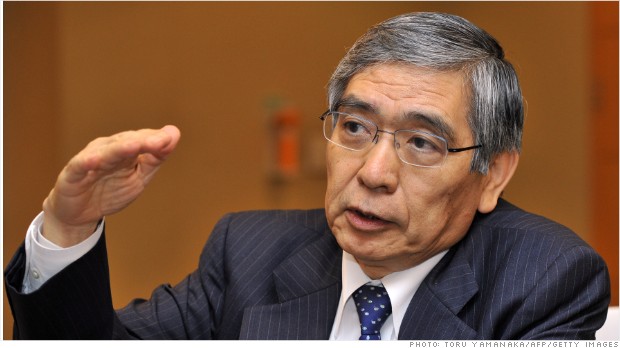
Kuroda and his team is set to meet this Friday for its monetary policy meeting. Half the street expects them to launch a renewed policy bazooka, partly because Kuroda is almost certain to lower his unrealistic economic forecasts through the bi-annual Outlook Report. Also, upper house elections will be held in July 2016, which means this will be a timely opportunity to boost inflation expectations and Nikkei (which is perceived to be an indicator of Abe’s popularity) considering policy lag. Last month, Reuters reported that showed BoJ officials met secretly to discuss alternative ways to revamp QQE in the longer term.
But many have casted doubts over their ability to do more – BOJ’s balance sheet stands at a sheer size of about 75% of GDP, relative to only 20+% for the other G3 (Fed, BoE, ECB). In August, an IMF paper suggested that BOJ may run out of JGBs to buy by the end of 2017. BOJ is also facing the largest maturity cycle of their JGBs since QQE started in 2013, making the task of additional easing an even more challenging task. So what can they do?
- Increase JGB purchases to 90-100 trn (from 80 trn yen/yr)
GPIF’s 3 sister pension funds were reported this month to be shifting to riskier assets and selling bonds, sign of ‘making way’ for the BOJ? - Increase ETF purchases by 2-3 trn (from 3 trn yen/yr)
Push Nikkei higher to recover from its global rout and encouraging more households to hold stocks, supporting equity prices and boosting investors’ sentiments. - Increase JGB duration (now 7-10 years)
Many have pointed out that currently, BoJ is essentially injecting cash into banks, who then park their money back into BoJ (irony). Increase duration will go into the territory of pension funds and life insurers, which may push them into riskier assets in search for yield. - Cut IOER
Personally don’t think this will happen as Kuroda has made negative remarks on last monetary policy meeting and more importantly, BOJ is adopting a monetary-base targeting rather than interest rate targeting. Reducing IOER may affect their credibility. - Other measures or a mix of the above (The Japanese are very creative people.)
But will they? My view is no.
BoJ has already their fair share and it’s up to Abe to continue with the structural reforms that Japan needs. Japan just needs time, and Abe has been given fresh mandate and political will to go ahead with the recent Abenomics 2.0. QQE hasn’t been effective too – record corporate profits not met with increased capex and wage growth; and exports growth slowed amid weak demand. Inflation expectations are holding up but many economic indicators are still not showing signs of recovery (negative Sept Core CPI) – partly distorted by last year consumption tax. More importantly, there were several instances where Kuroda/Abe downplayed possibility of further easing. The aging population is also facing increasing import costs (~60% of food is imported), putting political pressure on the government to hold back.
A short USDJPY (SL: 122.02, TP: 118.37 – I’m really bad at technicals) may be a trade to be put on.
Stay safe 🙂
P
Edit: Disclaimer – I would put it on only on Friday morning – Fed FOMC and tomorrow JPY Industrial Production (consensus -0.6%) have more upside than downside on USDJPY.
